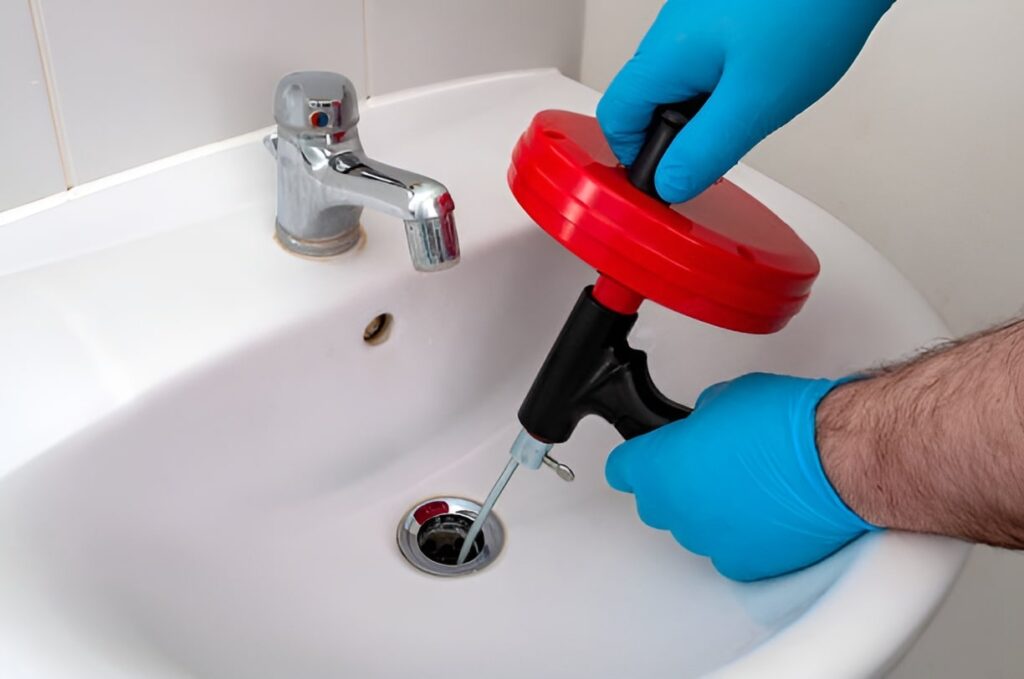A stopped-up bathroom drain can be very annoying. When water stands in your sink, shower or bathtub instead of flowing away, it can mess up your daily routine. This guide will help you understand what causes these clogs, teach you how to fix them yourself, tell you when to get help and show you how to stop future problems.
Key Takeaways
- A clogged bathroom sink often happens because of hair, soap scum and bits of stuff that build up over time.
- Good ways to fix a bathroom sink include using a plunger, drain snake or home fixes like vinegar and baking soda.
- The best way to clear a drain is to first remove any stuff you can see, then try your chosen method step by step.
- Know when to stop trying to fix it yourself and call a plumber, especially if your sink won’t drain at all.
- Be careful with chemical drain cleaners as they might harm your pipes.
- If your sink drain keeps getting clogged, it’s time to call a plumber.
- Regular care and watching what goes down the drain can stop future clogs.
Expert Pipe Installation & Repair Services in Los Angeles
Expert bathroom and kitchen renovation services
How Do You Unclog a Bathroom Sink Drain Quickly and Easily?
When your bathroom sink won’t drain, try simple fixes first. Pour boiling water down the drain or use a plunger. Mix baking soda and vinegar, wait 30 minutes, then flush with hot water. For stubborn clogs, use a drain snake to pull out hair and gunk. To prevent future problems, install a drain cover and rinse weekly with hot water.
Understanding the Problem: What Causes a Clogged Bathroom Drain?

Signs of a Drain Not Draining Properly
- Water goes down slowly from your sink
- Bubbling sounds when water drains
- Bad smells coming from the drain
- Standing water that stays in the sink
Common Culprits Behind a Clogged Bathroom Drain Pipe
| Cause | Description |
| Hair | The main enemy of bathroom drains, hair gets tangled and traps other stuff |
| Soap Scum | Soap leaves a film on pipe walls over time |
| Mineral Deposits | Hard water leaves minerals that make pipes narrower |
| Toothpaste & Beauty Products | These sticky items stick to drain pipes |
| Pipe Issues | Old pipes or bad setup can lead to repeated clogs |
DIY Solutions to Unclog a Bathroom Sink
Safety First: Precautions Before You Begin
Before starting, put on gloves and place a bucket underneath to catch any water that might spill when working on the p-trap. Clear the area under your sink and gather all tools you’ll need.
Simple Tools to Clear a Clogged Bathroom Drain
Using a Plunger Effectively
- Make sure there’s enough water in the sink to cover the plunger cup
- Place the plunger right over the drain opening
- Push down and pull up quickly several times
- Test the drain to see if water flows freely
Employing a Drain Snake or Bent Wire Hanger
A drain snake is one of the best ways to fix stubborn blockages:
- Put the snake into the drain opening
- Twist and push the snake into the pipe
- When you feel something blocking, rotate the snake to grab the clog
- Pull out the snake, bringing the clog with it
- Flush the drain with hot water to test
You can find a basic drain snake at Home Depot or any hardware store. If you don’t have a snake, you can straighten a wire hanger, leaving a small curve at one end to catch hair and stuff.
Clogged Bathroom Sink Home Remedy Options
The Boiling Water Method
For small clogs, pour boiling water down the drain in steps:
- Boil a pot of water
- Pour it down the drain in three steps, letting each work for a few seconds
- Test the drain
Note: Don’t use boiling water if you have PVC pipes, as it may hurt them.
The Classic Baking Soda and Vinegar Method
This home fix for bathroom sinks works by making a natural chemical reaction:
- Pour 1/2 cup of baking soda down the drain
- Follow with 1/2 cup of vinegar
- Cover the drain with a stopper for 30 minutes
- Flush with hot water
The fizzing action of vinegar and baking soda helps break down soap scum and other blockages.
Home Remedy to Unclog Bathroom Sink with Everyday Items
- Dish soap and hot water: Squirt dish soap down the drain, follow with hot water
- Salt and baking soda: Mix 1/2 cup of each, pour down drain, wait 30 minutes, flush with hot water
Additional Manual DIY Methods to Unclog Bathroom Drain
Removing and Cleaning the Drain Stopper
Hair often collects around the stopper. Remove it by:
- Unscrewing or popping it out
- Cleaning off hair and stuff
- Putting it back after clearing the clog
Cleaning the P-Trap
The p-trap is the curved pipe under the sink that often catches stuff:
- Place a bucket underneath to catch water
- Unscrew the p-trap by hand or with pliers
- Empty contents and clean well
- Put back and test the drain
Best Way to Unclog Bathroom Drain: Step-by-Step Guide
Preparing Your Workspace
- Clear items from under the sink
- Gather tools: plunger, drain snake, bucket, gloves
- Wear protective gloves to avoid touching germs
How to Clear Clogged Bathroom Drain Effectively
- Remove visible stuff from the drain opening and stopper
- Try the simplest method first usually boiling water or a plunger
- If that fails, move to more advanced methods like a drain snake or removing the p-trap
- Test the drain after each try by running water
When DIY Isn’t Enough: Recognizing Persistent Issues
If your sink is still clogged after many tries, the clog may be deeper in your drain line or sewer line. Forcing it could damage your pipes.
Chemical Drain Cleaners: To Use or Not to Use?
Types of Chemical Cleaners and How They Work
Chemical drain cleaners use strong chemicals to dissolve clogs but can harm your drain pipes over time.
The Risks: Potential Damage and Health Concerns
- Can damage certain pipe materials
- Harmful to skin and eyes
- May create dangerous reactions if mixed with other chemicals
- Bad for the environment
When to Consider Chemical Solutions
Use chemical drain cleaners only as a last try before calling a plumber and never after trying other chemicals.
Professional Help for Stubborn Clogged Bathroom Drains
When to Call a Plumber
- Multiple drains are clogged
- Water backs up in other fixtures
- Clog stays after trying multiple DIY methods
- You notice sewage smells
- Your sink doesn’t drain at all
What to Expect from a Professional Service
A professional plumber will:
- Use special equipment to find and check the clog
- May use a camera to look deep in your drain pipes
- Have tools like professional grade drain snakes and water jets
- Fix the problem completely, not just for now
Preventative Tips to Avoid Future Clogged Bathroom Drains
Regular Maintenance Practices
- Install drain covers to catch hair before it can fall down the drain
- Flush drains weekly with hot water to prevent buildup
- Use a cup of baking soda followed by vinegar monthly as preventative care
Lifestyle Changes to Reduce Drain Clogs
- Brush hair before showering to lessen hair going down the drain
- Wipe extra toothpaste into trash not sink
- Never pour grease down any drain (even in the kitchen sink)
By following these steps, you can fix your sink quickly and keep your bathroom drain flowing smoothly for years to come.
FAQs (Frequently Asked Questions)
Q1: What is the most common cause of a clogged bathroom drain?
A: Hair and soap scum are the main causes of bathroom sink drain clogs.
Q2: Can I use a home remedy to unclog a bathroom sink?
A: Yes, vinegar and baking soda or hot water work well for minor clogs.
Q3: What is the best way to unclog a bathroom drain without chemicals?
A: A drain snake is usually the most effective tool to clear a drain clog without chemicals.
Q4: How do I know if I need a professional to fix a clogged bathroom drain?
A: If your drain is clogged after multiple DIY tries or if you notice multiple slow drains in your home, it’s time to call a professional plumber.
Q5: How can I prevent a clogged bathroom drain pipe in the future?
A: Install drain covers, regularly flush with hot water and be careful about what goes down the drain.







